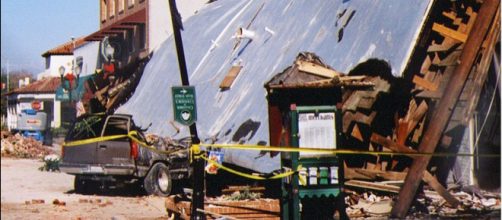California is aware of the San Andreas fault but a new rock structure dubbed the Durmid ladder has led to fears of a major earthquake that could be of 7.5 or stronger magnitude. This structure has been discovered by scientists from the Geological Society of America and experts believe the 15-mile long formation is a threat to the region.
According to Daily Mail UK, the Durmid ladder structure is located in the Durmid Hill region. This is a highly-faulted area of rock and is found in the upper layers, having the appearance of a broken ladder. It came to light while conducting a geological study on the southern tip of the fault zone and could result in a major earthquake.
The Durmid ladder and San Andreas fault
People in the know, believe that if any seismic activity triggers the collapse of the Durmid ladder structure and the wider San Andreas fault, it will lead to devastation that will spread to an area of nearly 15 square miles. The shape of the Durmid ladder is unusual because fault lines extend both vertically and horizontally, and the strength of the earthquake will depend on how the ladder collapses. It is expected to be of magnitude 7.5 or stronger. Minor tremors usually go unnoticed, but these can subsequently take the form of large destructive quakes.
The warning about such a scenario had been given by seismologist Dr. Lucy Jones, from the US Geological Survey.
She had warned in May 2017 about this and had advised the people of California to take necessary protective measures. In the event of a 7.8-magnitude quake, loss of lives and properties cannot be avoided and people should move to higher ground.
She made reference to the severe 9.0-magnitude earthquake of 2011 on the east coast of Japan and its casualties were in the thousands.
It seems an emergency meeting was in progress in the city hall and the leaders ignored instructions to move to higher ground. The result was a disaster because when the tsunami struck, more than 1000 people died.
California and the San Andreas fault
Express UK added that the San Andreas fault line extends for nearly 800-miles from Northern California, through San Francisco up to just north of Los Angeles.
It also goes to a depth of approximately 10 miles and consists of crushed and broken rock along the Californian coast. The US Geological Survey presumes that the southern end of the fault line could trigger the earthquake.
Statistics show that major events of this nature have occurred along the San Andreas fault at every 150-year interval over the past 1,400 to 1,500 years. The San Francisco Bay Area witnessed one of these in 1906, and it is difficult to predict them. Therefore, the people of California must be prepared to face the challenge.


